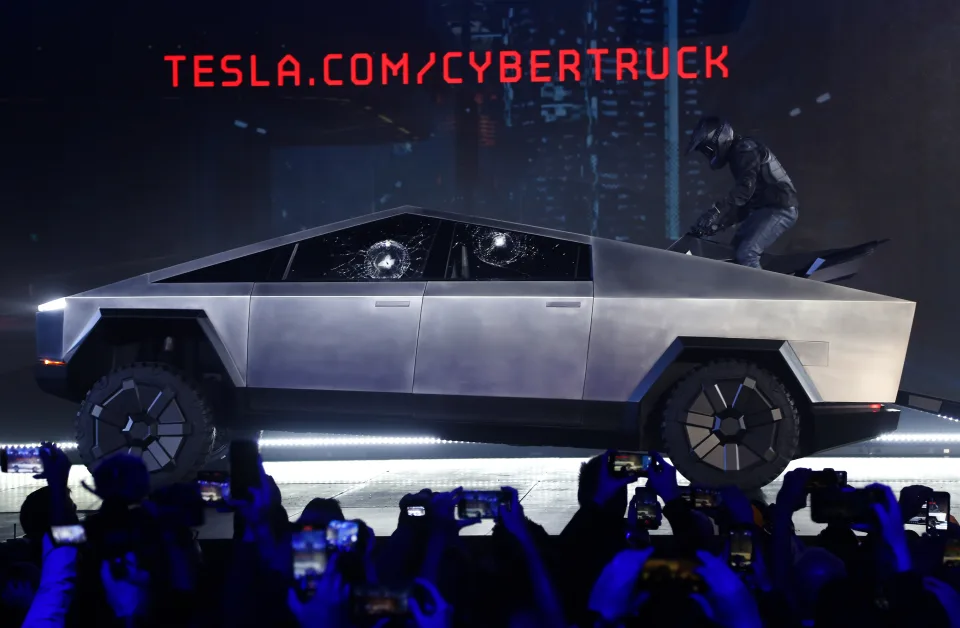Start shopping for your novelty-oversized bows now.

After slogging through years of delays and redesigns, the Tesla Cybertruck can finally be seen on public roads this holiday season, the company announced. Deliveries of the long-awaited luxury EV SUV will begin to select customers starting November 30, before the vehicle enters full production next year at its Texas Gigafactory.
At the same time, the vehicle’s electrical architecture is reportedly now being redesigned to accomodate an 800-volt standard, up from the 400V its existing Tesla lineup. A lot of luxury, performance and heavy duty EV models — from the Audi e-Tron to the GMC Hummer EV — utilize the 800V architecture, it’s what enables EVs with large battery capacities to charge at a higher rate (thereby reducing charging time) without reducing the vehicle’s wiring harness to slag.
“A lot of people excited about cyber truck,” Musk told reporters on Wednesday’s investor call. “I am too, i driven the car, it’s an amazing product. I want to emphasize that there will be enormous challenges in reaching volume production with the Cyber Truck and then in making it cash-flow positive.”
“This is normal for when you’ve got a product with a lot of new technology, or any brand new vehicle program — but especially one that is as different and advanced as the Cyber Truck,” he continued.”It is going to require work to reach planned production and be cash-flow positive, at a price that people can afford.”
For its existing model lines, Tesla’s production and deliveries are both down this quarter, about seven percent or roughly 30,000 units compared to Q2, but still significantly higher year over year, up ~100,000 units, over 2022. The EV automaker has slashed the prices on its vehicles repeatedly this year, first in March, then again in September (taking a full 20 percent off the MSRP at the time) and once more in early October.
The Model X, for example, began 2023 retailing for $120,990 — it currently lists for $79,990. The models S (now $74,990), Y ($52,490, down 24 percent from January) and 3 ($38,990, down 17 percent) have all seen similar price drops. In all, Tesla reports its cost of goods sold per vehicle decreased to ~$37,500 in Q3.
Musk had previously explained his willingness to drop prices and endure reduced margins if it translates to increased sales volume. “I think it does make sense to sacrifice margins in favor of making more vehicles,” he said in July.
“A sequential decline in volumes was caused by planned downtimes for factory upgrades, as discussed on the most recent earnings call. Our 2023 volume target of around 1.8 million vehicles remains unchanged,” Tesla wrote in an October press statement. The company delivered some 435,059 vehicles globally in Q3.
The company continues to increase its investments in AI development as well, having “more than doubled” the amount of processing power it dedicates to training its vehicular and Optimus robot AI systems, compared to Q2. The Optimus itself is reportedly receiving hardware upgrades and is being trained via AI, rather than “hard-coded” software.
Additionally, the company announced that all US and Canadian Hertz rentals will have access to the Tesla App, allowing them to use their phones as key fobs. Customers who already have a Tesla profile set up can apply those settings to their Hertz rental as well.





